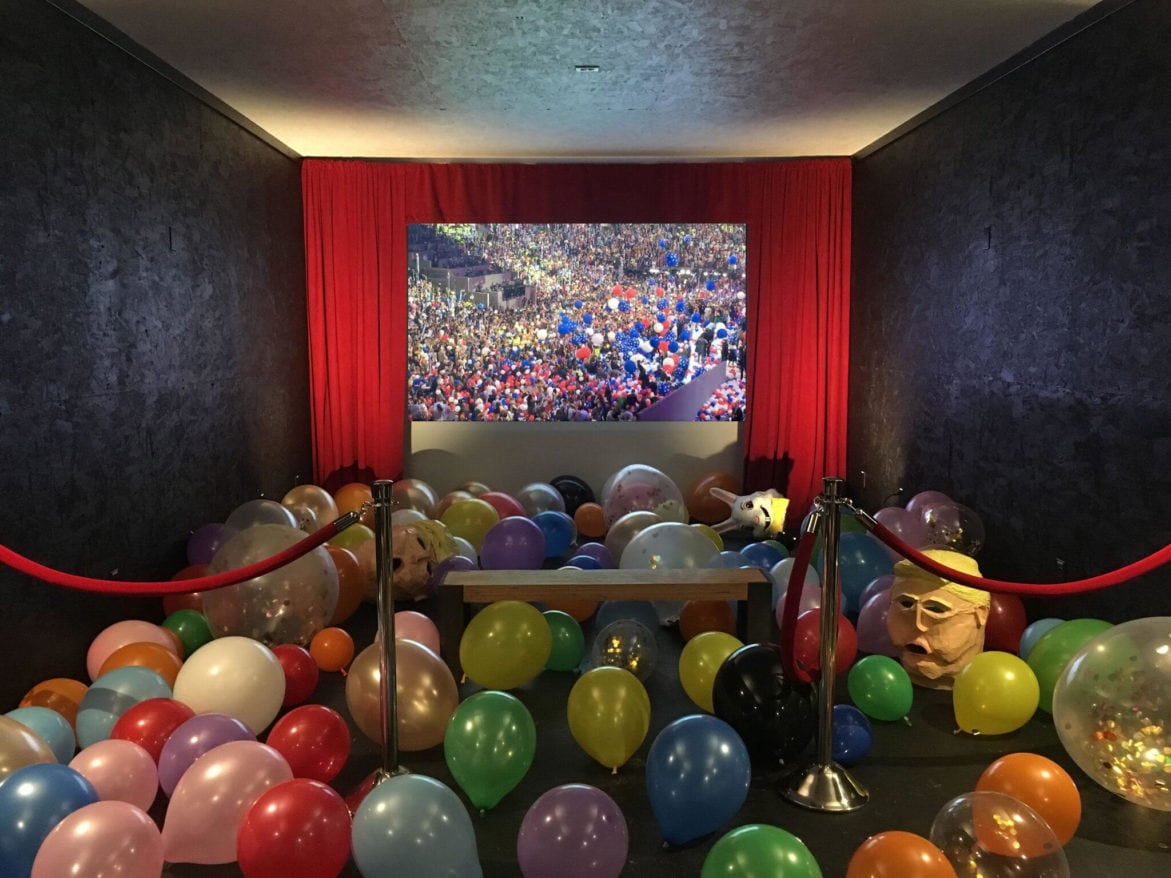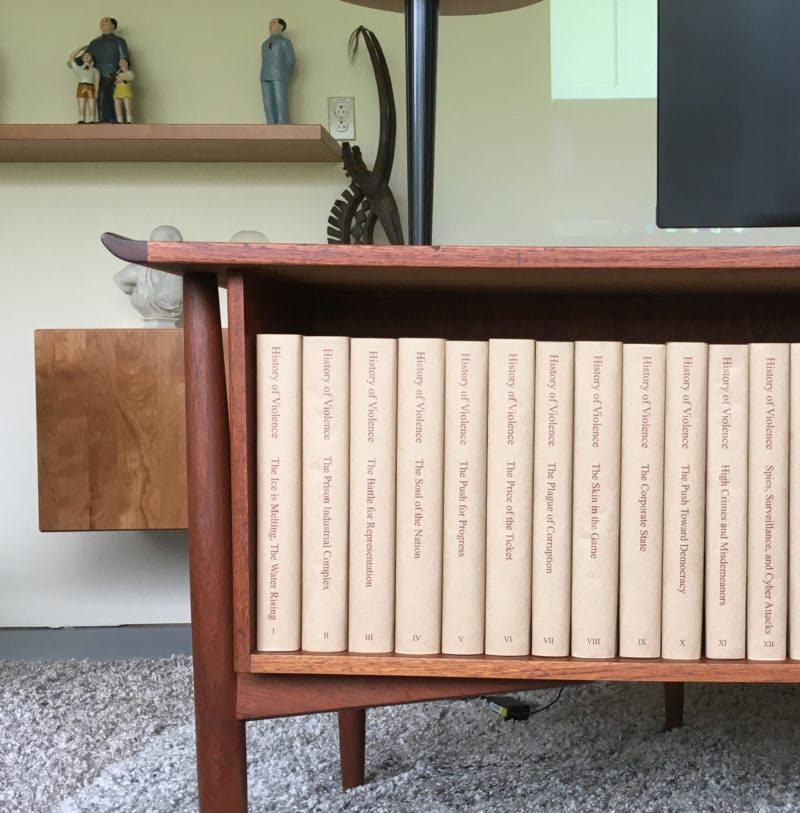“I’ve always thought that, in your life, you’re only truly interested in a few things.” Artist Carrie Mae Weems, speaking across a static-y line from her home in Syracuse, New York, is explaining why, despite working in a range of mediums, from modern dance to photography, on issues ranging from race to environmental degradation, she is frequently pulling the same narrative thread. “What you do over the course of your life is to refine and gain insight into these themes.” In her 20s, Weems studied dance under Anna Halprin, in collaboration with John Cage and Robert Morris, then became a union organizer, and eventually relocated to New York to study photography. There she worked with the legendary Harlem Studio Museum, where she rose to become a seminal force in modern American art. She achieved wide fame with her “Kitchen Table Series,” a pivotal view into the black female experience, has been awarded a MacArthur “Genius” grant, is a photography professor, and was the first black woman to receive a solo retrospective at the Guggenheim. So what is Carrie Mae Weems truly interested in? “Power. Particularly disrupting corrupt forms of power.”
In her newest installation, “Heave,” Weems unpacked a century of American violence. It was first displayed at the Cornell Council of the Arts 2018 Biennale, which was organized under the theme “Duration: Passage, Persistence, Survival” and also features works by artists Xu Bing (China) and Joanna Malinowska (US / Poland) among others. The Biennale, which is open until December 23rd, encourages discourse on “the persistence of passage” and the perseverance of life in hostile socio-ecological climates, and proved to be an ideal showcase. Through her work, Weems contrasts the fitful struggle for civil rights, set against the assassinations of the 1960s, with news coverage of the killings of Eric Garner and Trayvon Martin.
The installation comes as part of a larger project by Weems called “The History of Violence”; the first part, “The Shape of Things,” opened at the Park Avenue Armory in 2017. That experience brought 60 artists, activists, and performers through a day-long “conversation,” experienced via poetry, dance, and lectures, to contextualize the current wave of societal unrest. For the Biennale, Weems built two makeshift structures on Cornell’s green quad, a screening area and an adjacent re-creation of a 1950s-style family den. The latter permitted viewers a choice—to remain passive or to step in and participate.
The film, split into two parts, explores a timeline of modern American turmoil. The first segment, “Part 1: A CASE STUDY (A QUIET PLACE?),” brings viewers from “wars, revolts & revolutions” to our current wave of mass shootings, examining our complicity in mass violence and the battle for power between warring ideologies. For “Part 2: HEAVE,” a poetic howl that brings us to the larger power struggles of our daily existence, the artist pecks away at the “relentless noise of our daily consumption of tragedy and hypocrisy,” which is always simmering just below the surface, threatening to erupt.
Inside the re-created den, which included ephemera from Weems’ own family history, readers were able to flip through early LIFE publications, watch archival footage, or review the artist’s Encyclopedia of Violence, whose tomes ranged from “Wars, Wars and More Wars” to “The History of Violence and Corruption,” and which also encompassed ecological calamity and domestic abuse. Participants were also given the option of playing two video games, one on the moral implications of violence, the other Fortnight which has no consequence whatsoever. “I wanted to be able to see the kinds of choices people made,” Weems said, “Since violence, and how you decide to participate in it, is a choice—it’s always a choice.”
Seen through the framework of the film, which Weems hopes to bring to larger audiences, the current rise of alt-right ideology, mass shootings, and proto-fascism seems inevitable, given America’s many growing pains. Unpacking the violence of the ‘60s allows us to speak more profoundly to the moment.

“All the parameters were set in place years ago,” says Weems. “This ongoing, systematic way in which people are terrorized is reflected in what we’re experiencing now.” She believes that we’re witnessing the “heaving” of a cultural moment—that the build-up to Donald Trump started in the ‘60s, as those within institutions of power recognized that the country was undergoing a massive demographic shift.
If it sounds daunting or alarmist, Weems is unafraid. “I’m exhilarated by Trump being in the White House. It lets me know exactly where we are in the country; it tells me how people are thinking, how they’re feeling. It allows us to see that this moment is so glaring, there’s no way that we can avoid it any longer. Now, for the first time in my lifetime, I’m having conversations with all kinds of people across the divide. We can’t deny where the country is. That’s what Trump has done.” Weems asks viewers, in this clarifying moment, if they will stand to resist, or acquiesce: “Are you an accomplice in your victimization by remaining silent?”
Though the installation was forced to close early due to zoning issues, Weems hopes to build on this project and bring aspects of it to the Armory Show this spring. In the run-up to the midterms, she also worked with the For Freedoms project to get out the vote, exhorting the public to reject complacency, and placing billboards across the country calling for action. “We’ve been through worse, lived through worse. This is just a blip in history, and the arc of history is long. We will endure and learn great lessons. Part of that is, ‘What is America now?’ Against all of our hopes, what is it?” Beginning with that truth, she believes, we can better navigate our future.
A major exhibition of the artist’s work, “Carrie Mae Weems: Strategies of Engagement,” is currently on view in the Daley Family and Monan Galleries (September 10–December 13, 2018), McMullen Museum of Art, Boston College.
“Duration: Passage, Persistence, Survival” is on view through December 23, 2018, at Cornell University.
The 3rd annual Cornell Council of the Arts 2018 Biennale is curated by CCA Director Timothy Murray. Featuring: Carrie Mae Weems, Xu Bing, Ni’Ja Whitson, Richard Lin, Ruby Chishti and 18 installations and performances across the Cornell campus, Ithaca, New York.

